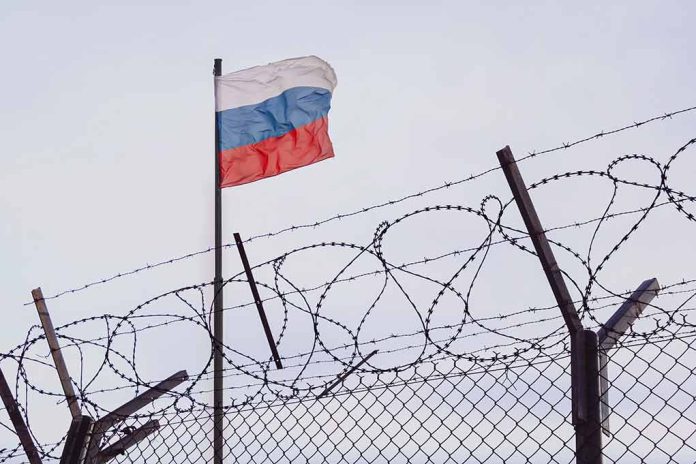
The U.S. escalates its battle against Russian influence, imposing new sanctions targeting the backbone of its economy: oil production and the “dark fleet” network.
At a Glance
- A quarter of the global tanker fleet transports Russian cargo, challenging shadow fleet concepts.
- Russian oil often sells outside established price caps, involving tankers active in multiple regions.
- Russia’s “shadow fleet” evades sanctions using over 400 aging vessels.
- U.S. sanctions target these covert shipping operations as part of its strategy against Russia.
Understanding the U.S. Sanctions
The U.S. government is intensifying its sanctions campaign against Russia, focusing on oil production and the so-called “dark fleet” network. This dual-targeted approach aims to disrupt Russia’s economic lifelines, which are critical in supporting the national budget and international ambitions. The sanctions arrive in the context of efforts to impact Russia’s oil export earnings, a crucial source funding its global activities, including the ongoing conflict in Ukraine.
In the oil sector, Russia GDP significantly depends on its energy exportations. Ukraine’s allies, including the U.S., established a price cap regime at the end of 2022 to limit Russia’s revenues. However, Russia circumvents these restrictions through a shadow fleet of tankers. This covert fleet isn’t distinctly Russian, as many vessels transport cargo from various nations, creating complex logistical networks beyond Western oversight.
🚨 NEW: The U.S. announces major sanctions on Russia's energy sector:
•2 top oil firms hit
•183 "shadow fleet" vessels sanctioned
•Dozens of oil traders/officials targeted
•Restrictions on Russian LNG & future oil projects.Aimed at crippling Putin's war economy.
— Misha Komadovsky (@komadovsky) January 10, 2025
Analyzing the Dark Fleet Dynamics
With a network of over 400 aging vessels, Russia employs opaque ownership tactics, utilizing entities in non-sanctioning nations to maintain the flow of its oil exports. Many of these tankers operate outside the price cap, using flag registrations in countries like Gabon or the Cook Islands. Despite the complexity, the scheme remains lucrative; the shadow fleet significantly bolsters Russia’s economic stability and aids its geopolitical ventures, including supporting the ruble.
“The prevailing assumption today is that most if not all of Russian oil transported by sea is being sold outside of the price cap regime,” writes Sergey Vakulenko.
The Biden Administration’s sanctions represent one of its most comprehensive measures against Russia in the final days of his presidency. The measures aim to enforce a price cap of $60 per barrel through restrictions on service providers. This objective is to deter possible embargoes circumventing these price caps and maintaining a check through real-time monitoring by Western bodies protecting strategic interests.
The sanctions are a fresh blow to Russia as it spent months developing a shadow fleet of tankers for LNG in a similar way it did for transporting oil
Such vessels have opaque ownership, unknown insurers and deploy practices that hide their locationhttps://t.co/Mvb91rsi2m
— Stephen Stapczynski (@SStapczynski) August 24, 2024
Impact of Sanctions and Future Outlook
Russian oil’s sale outside the regulated price cap and reliance on a shadowy network of transportation remains a pivotal challenge for the international community. The aging tanker fleet raises concerns over potential ecological disasters, which could increase the geopolitical stakes in case of oil spills. Nonetheless, Western nations continue to increase pressure through monitoring and targeted sanctions to limit Russia’s oil earnings used to fund various activities.
As Western nations enact these strategies, the effects on global oil prices and Russian economic capabilities will warrant close scrutiny by policymakers and international observers. The intricate balance of sanction enforcement and economic repercussions will play a critical role in shaping international energy politics in the foreseeable future.





